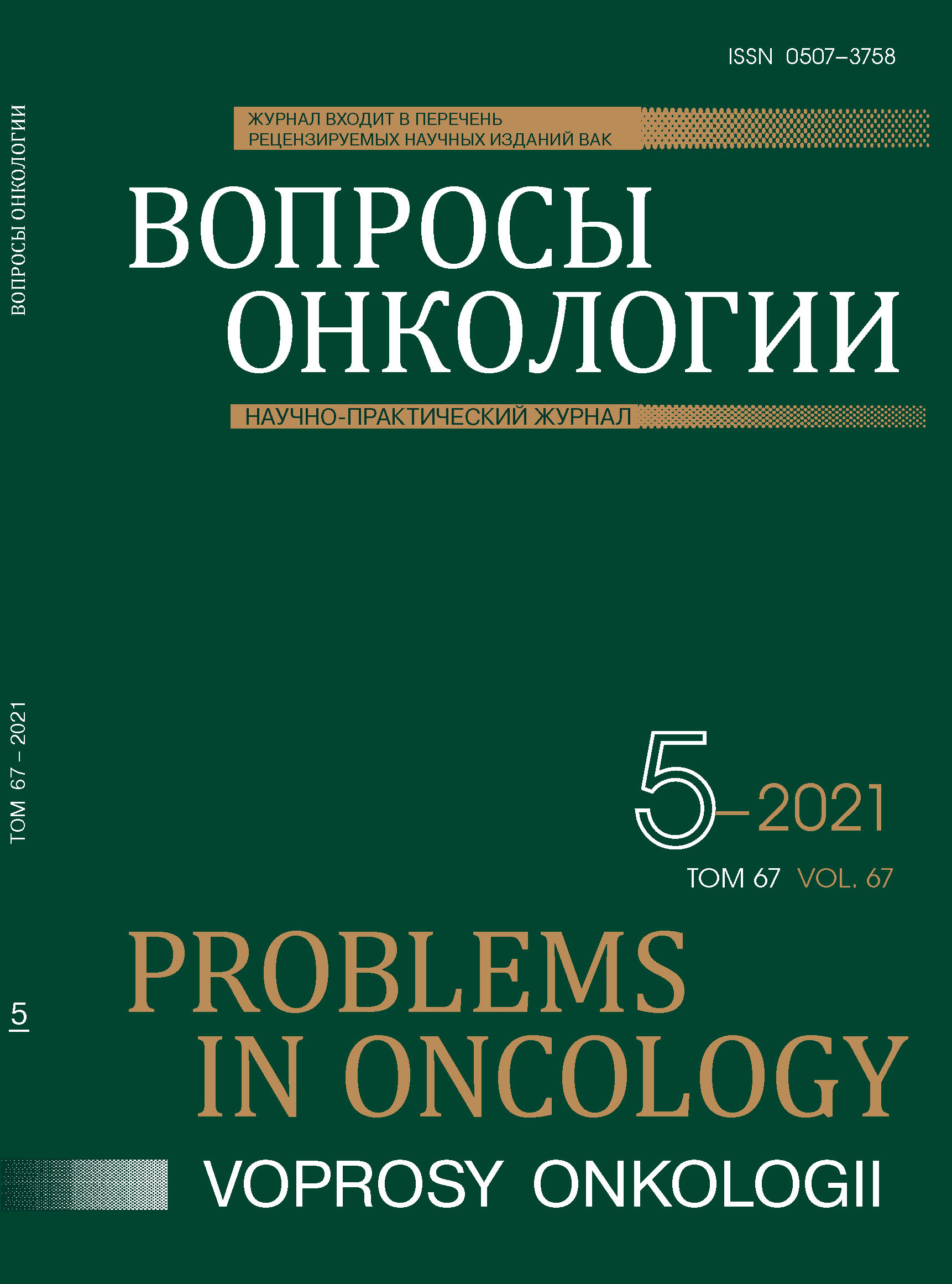Abstract
In 50 patients with gastric cancer, a neuroendocrine component was screened using immunohistochemical studies with antibodies to chromogenic and synaptophysin in the surgical material, as well as a somatostatin receptor status researcher (SSTR). The neuroendocrine component in various proportions was found in 62% of observers. In 2 neuroendocrine carcinomas, expression of type 2 SSTR was observed at the level of “2+”, and only one adeno-neuroendocrine carcinoma produced the same expression. In carcinomas with and without neuroendocrine component, the expression of various types of SSTR was detected in 61.8% of observers in both neuroendocrine and exocrine structures. In the group of highly differentiated neuroendocrine tumors, 100% of the observers detected the expression of at least one of the 5 types of somatostatin receptors, and in 95% - at the «3+» level. The data obtained do not allow making statistically significant conclusions about the dependence of the expression of SSTR on the presence of the neuroendocrine component, but with the prospect of further study not only in neuroendocrine tumors, but also in exocrine and mixed carcinomas.
References
Руководство по иммуногистохимической диагностике опухолей человека. 4-е изд., доп. и перераб. / Под ред. С.В.Петрова, Н.Т.Райхлина // DESIGNstudio «RED». 2004.
Shi et al: Somatostatin methylation in gastric cancer // Oncology letters. 2013;6:1794–1798.
Krystallenia I. Alexandraki, Aggeliki Karapanagioti et al. Advances and Current Concepts in the Medical Management of Gastroenteropancreatic Neuroendocrine Neoplasms // BioMed Research International Volume. 2017:12.
Pavel M, Baudin E, Couvelard A et al. Barcelona Consensus Conference participants: ENETS Consensus Guidelines for the management of patients with liver and other distant metastases from neuroendocrine neoplasms of foregut, mid- gut, hindgut, and unknown primary // Neuroendocrinology. 2012;95:157–176.
Volante M, Brizzi MP, Faggiano A et al. Somatostatin receptor type 2A immunohistochemistry in neuroendocrine tumors: a proposal of scoring system correlated with somatostatin receptor scintigraphy // Mod Pathol. 2007;20:1172–82.
Körner M, Waser JB, Reubi C. Does Somatostatin or Gastric Inhibitory Peptide Receptor Expression Correlate with Tumor Grade and Stage in Gut Neuroendocrine Tumors? // Neuroendocrinology. 2015;101:45–57.
Bray F, Ferlay J, Soerjomataram I et al. Global cancer statistics 2018: GLOBOCAN estimates of incidence and mortality worldwide for 36 cancers in 185 countries // CA Cancer J Clin. 2018;68:394–424.
Rawla P, Barsouk A. Epidemiology of gastric cancer: glob- al trends, risk factors and prevention // Gastroenterology Rev. 2019;14:26–38.
Кит О.И., Дерижанова И.С., Карнаухов Н.С. Вопросы классификации нейроэндокринных опухолей желудка // Вопросы онкологии. 2016;62(5):573–579.
Пат. 2613300 Российская Федерация, МПК G01N. Способ диагностики низкодифференцированного нейроэндокринного рака желудка [текст] / Кит О.И., Дерижанова И.С., Карнаухов Н.С.; заявитель и патентообладатель Ростовский научно-исследовательский онкологический институт. (RU). № 2015148302; заявл. 10.11.2015; опубл. 15.03.2017, Бюл. № 8. 11 с.: илл.

This work is licensed under a Creative Commons Attribution-NonCommercial-NoDerivatives 4.0 International License.
© АННМО «Вопросы онкологии», Copyright (c) 2021
